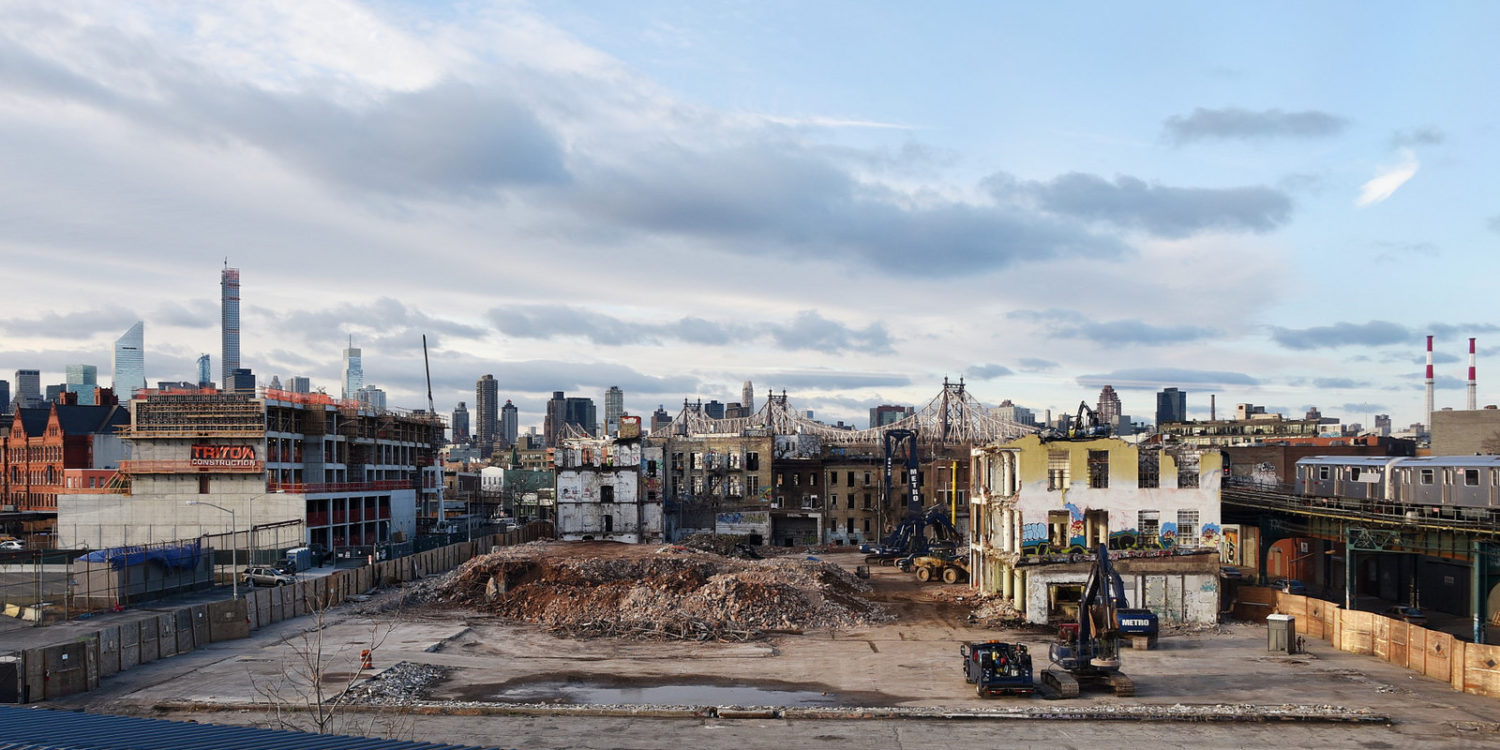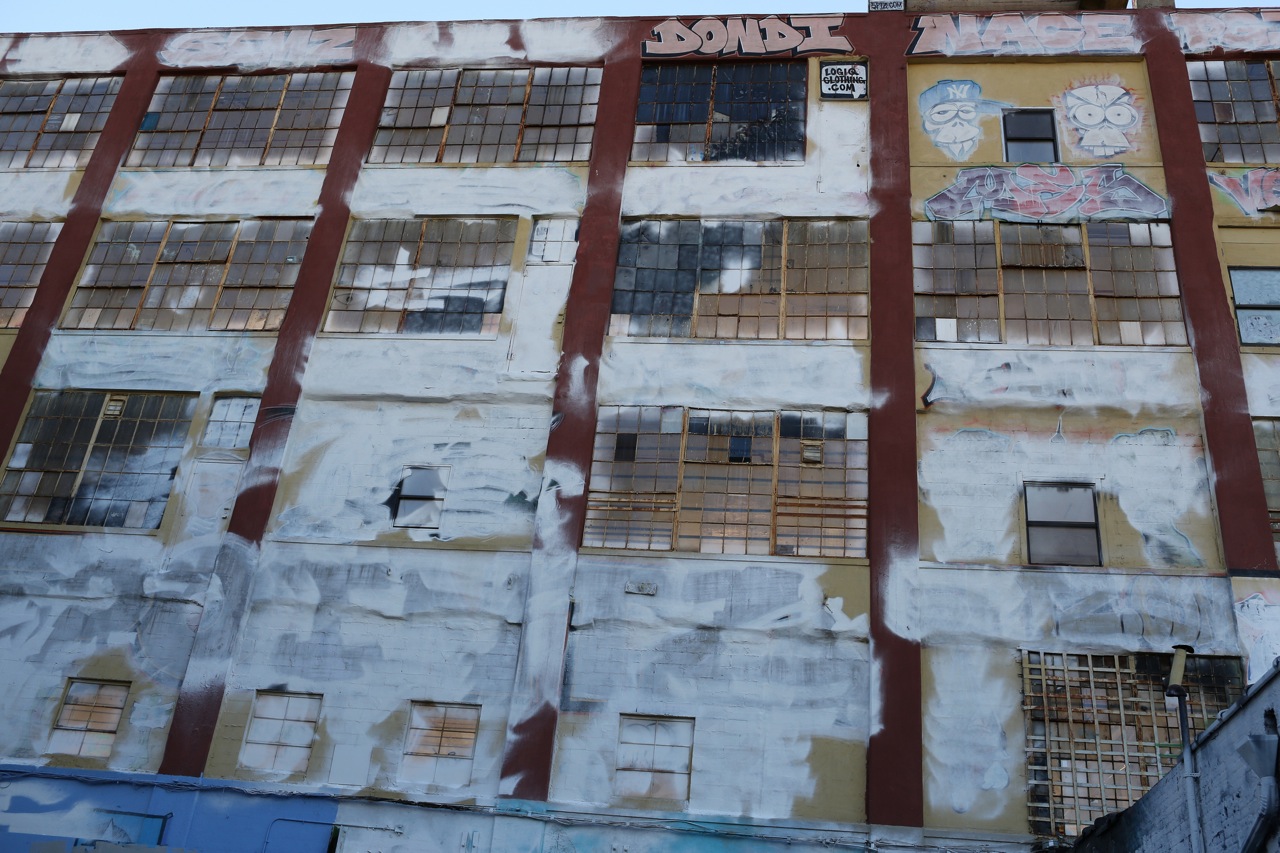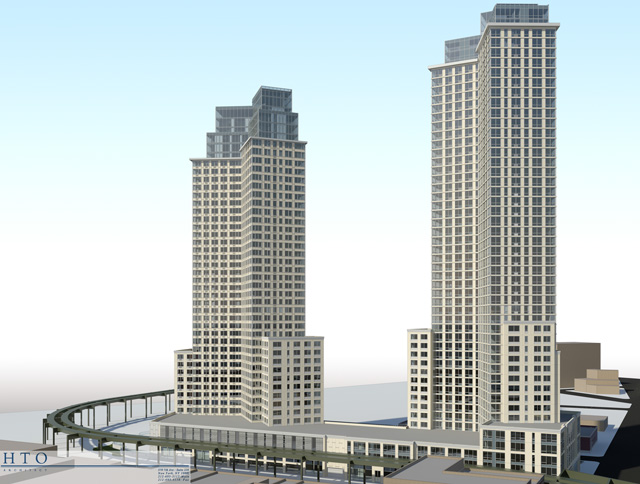For decades, a towering former factory was hailed as, if not the center of street-art, than certainly one if its strongest facilitators. It was an oddity in the infamously informal world for its self-seeking legitimacy: boasting a curator, paid staff and even write ups in the New York Times. Indeed the Times once referred to the building as being made of ‘murals with allegorical tales of good and evil, modern takes on Rembrandt, variations on and homages to grunge comix and the golden age of Mad magazine.’
This was 5 Pointz.
So what happened? How did arguably one of the most fascinating and potentially influential street-art venues in New York become a pile of rubble?
Dead Rabbits
When the actual structure of what would become 5 Pointz was competed in the 1890s, it was for a water meter factory. The building was not particularly architecturally significant, however it did reflect a proud expansion of the initiatives popularized by Fordism. The factory would remain operational until the decline of US east coast industrialism in the late 1950s and 60s. About ten years later, the property was bought by fairly young developer: Jerry Wolkoff.
At the time of this purchase, Wolkoff was in his mid thirties, but had already lived a lifetime in the development business. Beginning as a teenager building houses in Brownsville (Brooklyn) he gained an eye for valuable properties but more importantly, for valuable locations. The former Neptune Water Meter Factory was nothing if not a slow-boil investment. New York in the 70s was a difficult time for property, particularly in the Long Island City section of Queens. The huge, abandoned building was extremely attractive to those equipped with aerosol cans and a want of free expression. Wolkoff converted the factory into maintainable artists studios, many of which held the burgeoning street artists, (called here ‘Aerosol Artists’) as well as other craftspeople.
Street art, as it is now known, can trace at least one narrative of its origin story to this age of New York. There were complex aesthetic forces at work and the likes of Keith Haring, Jean-Michel Basquiat and even famous taggers like Taki183, were taking to the streets and subway trains, though sometimes with serious legal repercussions. It was in light of these consequences that former plumber, Pat DiLillo, founded ‘Graffiti Terminators’ in 1992, in an attempt to legitimize the art movement and arguing against this kind of art as a gateway to criminality. DiLillo had a need and Wolkoff had a venue. A year later the very 90s moniker of ‘Phun Phactory’ was christened.
The Earth Turns But We Don’t Feel It Move
The Phun Phactory had its detractors, their main concern being that prior to work being acceptable for the venue, photographs of previous work had to be presented. This issue was summed up by Police Detective Kevin Casey in 1998: ‘You do not practice it on paper.’
DiLillo maintained that it was not his job to run a criminal-justice program, Phun Phactory was an art program alone. And really, there was not much anyone could do about it, after dozens of bureaucratic cartwheels, the Phactory was extremely, specifically legal.
Further, DiLillo was uncompromising on the terminology. ‘Graffiti’ was illegal and implied gang warfare. The term encouraged instead was ‘Aerosol Art’. The strict rules for conduct worked off the dogma of ‘Pat is in charge!’. There was to be no gang-related work posted, and if an artist’s tags were seen in the adjacent neighborhood, all of their work would be immediately removed.
Despite initial ruffled feathers, the building became a much-loved part of Queens. It could be seen most prominently from the passing elevated trains and was continually changing. Making the sometimes grey, monotonous journey more interesting. As time went on, the search for legitimacy was emphasized when the P.S.1 Contemporary Art Center, an art venue across the street, became an official affiliate of the Museum of Modern Art in 2000.
Not in response, but certainly advantageously, a new curator was introduced in 2002: Jonathan Cohen. Cohen rechristened the building ‘5 Pointz’, a nod to making it the centerpoint of the five borough’s art scenes and a possible reference to the Martin Scorsese film, ‘Gangs of New York’ which debuted that year. Cohen’s objective was simple: this operation would become world class. End of story. So the already high standards were made even more so.
Not only was previous work reviewed via portfolio, mural proposals were to be submitted in advance. Cohen emphasized elaborate pieces, the kind that would never be possible in the dark of the night on a moving train. The work became brighter, slightly more intellectual, and ever bolder. Finally in true gallery fashion, photo and video shoots would need prior permission to use the site and tours were given by request.
Arguably, 5 Pointz had all its bases covered: the hoi polloi could see work from the train and the highest of brows could see it on their way back from the MoMA PS1. Many envisioned that someday it would be made a museum.
But like all zeniths, it’s hard to see the downfall that’s just about to happen.
Everything We Knew, Mightily Swept Away
When an artist was injured by a fire escape collapse in 2009, the glow of 5 Pointz had met its first real hurdle. A 37-year old jeweler working at the Crane Street Studios (what the inside of 5 Pointz was called) was seriously injured when the concrete fell apart. An inspection was launched. The studios were temporarily closed. Within quick succession the artists realized the precariousness of this situation at 5 Pointz. There was no formal requirement that Wolkoff had to keep it open, let alone keep the exterior painted and though he had a fondness for the artists, business is business. According to a New York Times article about the accident, it was supposed that the studios (and subsequently the aerosol art) did not make any real money. The rent was well below market value and though Wolkoff reportedly accepted art instead of rent on occasion, it’s not a savvy business move to continually spend on property that does not return investment.
Like a doomed love affair in a movie, both Wolkoff and Cohen always knew this arrangement was temporary. But ‘temporary’ is a dubious term and meant different things to both men.
It all came to ahead in 2013 when Wolkoff was sued by 17 artists claiming the building had cultural significance and should be preserved. Even Banksy nodded to 5 Pointz at the conclusion of his New York tour with the line: ‘Thanks for your patience. It’s been fun. Save 5 Pointz. Bye’.
But it was not enough.
Judge Frederic Block concluded after several days of testimony that, while the artists had a sympathetic case, there was no legal reason why the developer could not do what he wanted with his own property.
Wolkoff’s company did just that. On November 19th, a week after the verdict had been announced in the New York Daily News, the entire building was whitewashed. The shock from the artists was incalculable. Defending himself, the now 77 year old Wolkoff told New York Magazine the decision had been his.
‘The judge gave me the right to demolish my building. It would take three months. To watch the pieces go down piece by piece by piece would be torturous. In New York, you can’t implode a building. So let me just go in and paint it in one morning, and it’s over with. I had tears in my eyes while I was doing it. I know it seems like a bitter pill to take, but it’s medicine. I didn’t like it, but it’s going to get me better. It’s best for them, and it’s best for me. In my new building I’ll have walls for them to express their aerosol art.’
Wolkoff further argued that the point of this kind of art was perpetual change, that artists paint over their own work, and each other’s work, all the time. He received massive backlash and has since come to represent the physical embodiment of the rocky relationship between money and art.
It Was Like We Were Never Here
As of the beginning of 2015, the only thing that remains of 5 Pointz is rubble. The intended space for aerosol art in the future +40 story luxury condos is considered cold flippancy. The most common feeling all around, even arguably for Wolkoff, is disappointment. Disappointment for the loss and, indeed, for what this loss indicates for the city as a whole.
On the one hand, Jerry Wolkoff did allow an extraordinary art movement to exist on his property for decades. Making relatively no profit from it. He’s not a charity, he’s a developer. On the other hand, how many 5 Pointz are going to be lost in the next few years?
Queens, like many parts of New York City, is in transition. Named by Lonely Planet as the #1 place to visit in the United States, it’s arguably the city’s most diverse borough. Rumbling through apartment websites are countless advertisements declaring patrons should ‘discover Queens’. As if it were an uncharted, uninhabited island, just waiting for those sweet, sweet developer millions. The resonance of Jane Jacob’s The Death and Life of Great American Cities clanging violently, albeit this time with a wealthier clientele.
The trend of buying property for the sake of owning it, rather than living in it, has been felt worldwide. From London, Amsterdam, Los Angeles and even parts of China, this economic choice can often lead to the specific detriment of current residents. Shops, restaurants or even civic buildings, like schools, are influenced by permanent population. So if there is none (the former inhabitants either being chased out or bowing to skyrocketing property prices) threats are present for strange, eerie, neoliberal ghost towns.
Though to name clear heroes and villains for this kind of development is simplistic. The Wolkoffs are not under any legal obligation to provide for locals on a scale they do not determine. (Even though many hoped that they would anyway.) As the economy turns out of its miserable stagnancy, the casualties are the strange and special parts of the urban fabric which serve cultural purposes, if not financial ones. Places fueled by the spontaneity and magic which thrives under obscurity. That intangible coolness which is nectar to hipsters and their ilk.
There are of course initiatives in every large-scale project for community development. However ‘community development’, an expression that has been overused to the point of meaninglessness, is not an architectural balm, it’s a different animal altogether. The most important thing to be aware of is not the presence of community development efforts, but what ‘community’ those efforts are referring to.
In the case of 5 Pointz, the artists were done in by their own faith in legitimacy and legal arrangement. It was legality that secured the artists a venue, and it was legality that tore it apart. The only thing left is to play the waiting game until the glass and steel palaces are once again the vacant, echoing relics of an old boom.





